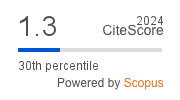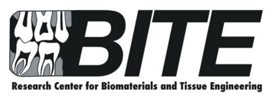Analysis of mandibular third molar impaction classification with different skeletal malocclusions
Downloads
Background: Since the third molar teeth are the last to erupt in the oral cavity, they can become more impacted than other teeth. Insufficient retromolar space and the eruption direction of the third molars can affect this situation. The condition, distribution, and prevalence of impacted third molars in skeletal Class I, II, and III anomalies are important in treatment predictability. Purpose: The aim of this study is to classify impacted lower third molars in patients with different skeletal malocclusions. Methods: This retrospective study examined panoramic X-ray records of patients treated at Inonu University Faculty of Dentistry, Department of Orthodontics, between 2014 and 2021. In total, 1219 mandibular third molar teeth were considered. Impacted mandibular third molar teeth of individuals with different skeletal structures were grouped according to the Pell and Gregory, Winter, and Archer classifications. Results: In this study, 37.74% of the participants were male, and 62.26% were female; 40.94% of examined teeth were skeletal Class I, 41.84% were Class II, and 17.23% were Class III. It was determined that 91.63% of all examined teeth were impacted, and 8.37% had erupted. According to the Pell and Gregory classification, 21.41% of teeth were Grade (I), 38.06% were Grade (II), and 40.53% were Grade (III). According to the Winter classification, 3.12% of examined teeth were buccal, 6.89% were horizontal, 23.71% were mesioangular, and 66.28% were vertical. According to the Archer classification, 14.44% of examined teeth were in position A, 30.02% were in position B, and 55.54% were in position C. No statistically significant relationship was established between grades and gender (p>0.05). Conclusion: A relationship was ascertained between the impacted positions of mandibular third molars in different skeletal structures.
Downloads
Syahdinda MR, Nugraha AP, Triwardhani A, Noor TNE binti TA. Management of impacted maxillary canine with surgical exposure and alignment by orthodontic treatment. Dent J. 2022; 55(4): 235–9. doi: https://doi.org/10.20473/j.djmkg.v55.i4.p235-239
Eshghpour M, Rezaei NM, Nejat A. Effect of menstrual cycle on frequency of alveolar osteitis in women undergoing surgical removal of mandibular third molar: A single-blind randomized clinical trial. J Oral Maxillofac Surg. 2013; 71(9): 1484–9. doi: https://doi.org/10.1016/j.joms.2013.05.004
Hashemipour MA, Arashlow MT, Hanzaei FF. Incidence of impacted mandibular and maxillary third molars-a radiographic study in a Southeast Iran population. Med Oral Patol Oral y Cir Bucal. 2013; 18: e140–5. doi: https://doi.org/10.4317/medoral.18028
Wang D, He X, Wang Y, Li Z, Zhu Y, Sun C, Ye J, Jiang H, Cheng J. External root resorption of the second molar associated with mesially and horizontally impacted mandibular third molar: evidence from cone beam computed tomography. Clin Oral Investig. 2017; 21(4): 1335–42. doi: https://doi.org/10.1007/s00784-016-1888-y
Srivastava N, Shetty A, Goswami R, Apparaju V, Bagga V, Kale S. Incidence of distal caries in mandibular second molars due to impacted third molars: Nonintervention strategy of asymptomatic third molars causes harm? A retrospective study. Int J Appl Basic Med Res. 2017; 7(1): 15–9. doi: https://doi.org/10.4103/2229-516X.198505
Göksu VC, Ersoy HE, Ulutürk H, Yücel ZE. Gömülü Mandibular Üçüncü Molar Diş Pozisyonlarının Demografik Olarak Ä°ncelenmesi: Retrospektif Çalışma Demographic. Examination of impacted mandibular third molar tooth positions: A retrospective study. ADO Klin Bilim Derg. 2021; 10(3): 165–71. web: https://dergipark.org.tr/tr/pub/adoklinikbilimler/issue/64956/910566
Passi D, Singh G, Dutta S, Srivastava D, Chandra L, Mishra S, Srivastava A, Dubey M. Study of pattern and prevalence of mandibular impacted third molar among Delhi-National Capital Region population with newer proposed classification of mandibular impacted third molar: A retrospective study. Natl J Maxillofac Surg. 2019; 10(1): 59–67. doi: https://doi.org/10.4103/njms.NJMS_70_17
Miclotte A, Grommen B, Cadenas de Llano-Pérula M, Verdonck A, Jacobs R, Willems G. The effect of first and second premolar extractions on third molars: A retrospective longitudinal study. J Dent. 2017; 61: 55–66. doi: https://doi.org/10.1016/j.jdent.2017.03.007
Lewusz-Butkiewicz K, Kaczor K, Nowicka A. Risk factors in oroantral communication while extracting the upper third molar: Systematic review. Dent Med Probl. 2018; 55(1): 69–74. doi: https://doi.org/10.17219/dmp/80944
Cederhag J, Lundegren N, Alstergren P, Shi X-Q, Hellén-Halme K. Evaluation of panoramic radiographs in relation to the mandibular third molar and to incidental findings in an adult population. Eur J Dent. 2021; 15(02): 266–72. doi: https://doi.org/10.1055/s-0040-1721294
Cesur E, Orhan K. Applications of contemporary imaging modalities in orthodontics. J Exp Clin Med. 2021; 38: 104–12. doi: https://doi.org/10.52142/omujecm.38.si.dent.5
Hassan AH. Mandibular cephalometric characteristics of a Saudi sample of patients having impacted third molars. Saudi Dent J. 2011; 23(2): 73–80. doi: https://doi.org/10.1016/j.sdentj.2010.11.001
Tassoker M, Kok H, Sener S. Is there a possible association between skeletal face types and third molar impaction? A retrospective radiographic study. Med Princ Pract. 2019; 28(1): 70–4. doi: https://doi.org/10.1159/000495005
Shokri A, Mahmoudzadeh M, Baharvand M, Mortazavi H, Faradmal J, Khajeh S, Yousefi F, Noruzi-Gangachin M. Position of impacted mandibular third molar in different skeletal facial types: First radiographic evaluation in a group of Iranian patients. Imaging Sci Dent. 2014; 44(1): 61–5. doi: https://doi.org/10.5624/isd.2014.44.1.61
Flores-Mir C, McGrath L, Heo G, Major PW. Efficiency of molar distalization associated with second and third molar eruption stage. Angle Orthod. 2013; 83(4): 735–42. doi: https://doi.org/10.2319/081612-658.1
Matzen LH, Petersen LB, Wenzel A. Radiographic methods used before removal of mandibular third molars among randomly selected general dental clinics. Dentomaxillofacial Radiol. 2016; 45(4): 20150226. doi: https://doi.org/10.1259/dmfr.20150226
Padhye MN, Dabir A V., Girotra CS, Pandhi VH. Pattern of mandibular third molar impaction in the Indian population: a retrospective clinico-radiographic survey. Oral Surg Oral Med Oral Pathol Oral Radiol. 2013; 116(3): e161–6. doi: https://doi.org/10.1016/j.oooo.2011.12.019
Ayranci F, Omezli MM, Sivrikaya EC, Rastgeldi ZO. Prevalence of impacted wisdom teeth in Middle Black Sea population. J Clin Exp Investig. 2017; 8(2): 58–61. doi: https://doi.org/10.5799/jcei.333381
Al-Dajani M, Abouonq AO, Almohammadi TA, Alruwaili MK, Alswilem RO, Alzoubi IA. A Cohort study of the patterns of third molar impaction in panoramic radiographs in Saudi population. Open Dent J. 2017; 11(1): 648–60. doi: https://doi.org/10.2174/1874210601711010648
Yilmaz S, Adisen MZ, Misirlioglu M, Yorubulut S. Assessment of third molar impaction pattern and associated clinical symptoms in a Central Anatolian Turkish population. Med Princ Pract. 2016; 25(2): 169–75. doi: https://doi.org/10.1159/000442416
Jaroń A, Trybek G. The pattern of mandibular third molar impaction and assessment of surgery difficulty: A retrospective study of radiographs in East Baltic population. Int J Environ Res Public Health. 2021; 18(11): 6016. doi: https://doi.org/10.3390/ijerph18116016
Abu Alhaija ESJ, AlBhairan HM, AlKhateeb SN. Mandibular third molar space in different antero-posterior skeletal patterns. Eur J Orthod. 2011; 33(5): 570–6. doi: https://doi.org/10.1093/ejo/cjq125
Copyright (c) 2023 Dental Journal

This work is licensed under a Creative Commons Attribution-ShareAlike 4.0 International License.
- Every manuscript submitted to must observe the policy and terms set by the Dental Journal (Majalah Kedokteran Gigi).
- Publication rights to manuscript content published by the Dental Journal (Majalah Kedokteran Gigi) is owned by the journal with the consent and approval of the author(s) concerned.
- Full texts of electronically published manuscripts can be accessed free of charge and used according to the license shown below.
- The Dental Journal (Majalah Kedokteran Gigi) is licensed under a Creative Commons Attribution-ShareAlike 4.0 International License

















